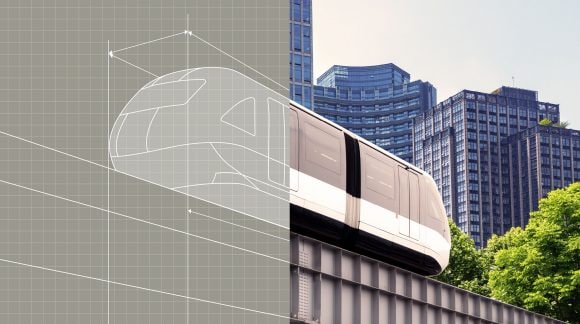
Multi-step iterative process
Multi-step iterative process

There are two popular investment approaches for long-only equity index portfolios, segregated accounts, typically used by institutional clients with large, often customised, portfolios, and exchange traded funds (ETFs), typically used by institutional, wholesale and retail clients with portfolios of any size. In general, ETFs are best suited for tactical exposure while segregated accounts are best suited for strategic exposure, although there are exceptions to this, including many investors using ETFs as part of their strategic asset allocation.
ETFs are a relatively newcomer to the investment world but have recorded spectacular growth since their launch in 1990. Total AUM in ETFs have now reached USD 14 trillion globally, and exceed AUM in hedge funds. Given ETFs' increasing share of overall index assets, we believe investors need to be aware of their specifics when selecting an investment vehicle for their index portfolio. Below, we outline some of the key points that investors should consider when assessing the suitability of different investment vehicle options for their index portfolios.
Structure and regulation: Segregated accounts are created for and managed on behalf of one investor only and they are typically unregulated. Such structure allows literally unlimited degree of flexibility in terms of mandate customization to suit investor's specific requirements. In contrast, ETFs are organised as pooled vehicles open to many investors. They are listed on regulated exchanges, trade throughout the day and are continuously priced, just like common stocks. ETFs are regulated by national and supra-national investment directives, such as the UCITS directive in the EU. Although customization is not available on ETFs, the vast range of ETFs available on practically any index allows investors to select from a variety of exposures. ETFs offer three key advantages: intraday liquidity, holdings transparency, and certainty of execution. They can be traded on the primary stock exchange, on multi-lateral trading facilities via the request for quote protocol and off exchange via the systematic internalized regime. They can be traded on risk or versus NAV depending on the client’s execution strategy. Unlike other pooled funds, there is no concept of a swing adjustment so the client knows the ETF price or spread to NAV before trading. ETF providers are required to publish the full holdings daily.
Cost: Segregated accounts and ETFs are priced differently and the overall cost, for a product tracking the same index, could vary significantly between the two. As a general rule, for larger size long term mandates segregated accounts tend to be a more cost effective solution than ETFs, but investors need to consider the specifics associated with the cost of the two investment vehicles, including:
- ETFs typically quote total expense ratio (TER), which, as the name suggests, is an all-encompassing flat fee that typical investors in the ETF would pay.
- The cost of a segregated portfolio comprises several components, including management fee, index fee, and custody fee. Management fee, paid to the index manager, is negotiable and impacted, among other factors, by portfolio size, index complexity and index geographical exposure. Index fee includes asset-based index licence fee and index data fee, paid to the index provider, typically applies to all index portfolios, and, depending on the portfolio size and index type, could be the highest component of the overall fee. Custody fee, paid to the custodian, is usually negotiated between the client and the custodian of their choice.
Stock lending income can help offset the cost for both ETFs and segregated accounts, although investors in segregated accounts would have more control over the stock lending arrangements. Investors in ETFs may be able to earn additional stock lending income from lending the ETF.
Operational set-up: ETFs are operationally easy and quick to access for investors: they are long-only instruments with continuous pricing, have no maturity date and trading ETFs is analogous to trading cash equities. ETFs benefit from no onboarding requirement with the ETF provider and anonymity of investment. Segregated accounts tend to have a longer operational set-up process, involving execution of Investment Management Agreement, which is tailored for every segregated portfolio, custody set-up with the client's preferred custodian and customised reporting. In emerging markets opening custody accounts could be a long and somewhat expensive process.
Transparency: Both segregated accounts and ETFs are highly transparent investment vehicles, but their transparency stems from different aspects. ETFs' transparency is related mostly to their structure and set-up, i.e., continuous trading throughout the day on regulated exchanges and daily disclosure of holdings. Segregated accounts' transparency occurs because the underlying equities are owned directly by the client, allowing continuous transparency, if required. One area where transparency tends to be higher for ETFs compared to segregated accounts is performance: performance for segregated accounts typically occurs on a monthly basis while for ETFs it is available daily.
Customization: As pooled vehicles are open to many investors, ETFs and index funds do not offer any customised features – to put it simply, investors get what’s ‘written on the tin’. However, the vast range of ETFs available on practically any index allows investors to select from a variety of exposures. Segregated accounts, in contrast, can be tailored to client's specific requirements from a number of angles. Clients can select a custom index as a benchmark for their index portfolio, or they can opt to keep the underlying index unchanged and apply the customization on the portfolio via a custom rules-based strategy.
Direct ownership of underlying: The topic of direct ownership of underlying is, in a way, related to the topic of customization. Because ETFs are pooled vehicles open to many investors, clients don’t typically have control over matters such as trading for index changes, corporate actions treatment, risk budget utilisation, and voting (the latter is starting to change with potential opportunities to vote in certain exposures). Investors with segregated accounts, on the other hand, have a very high degree of control, as they could discuss and agree with their index manager the most efficient trading strategy and risk budget utilisation, stock lending arrangements, voting and engagement policy to match their specific requirements.
Trading and liquidity: ETFs are usually traded on risk (an arrival price benchmark) or versus NAV (NAV benchmark). Increasingly we are seeing ETFs traded via dedicated fair value algorithms. The client is in full control of the execution strategy in terms of how to trade (exchange, multi-lateral trading facility or over the counter), when to trade (risk or versus NAV) and with whom to trade (which broker to trade with via the request for quote protocol). ETF investors can choose an execution strategy in line with their best execution policy. ETFs benefit from the concept of netting. In the secondary market ETFs buyers and sellers may match off therefore there is no primary market trade. As there is no primary market trade ETF investors may benefit from a reduced bid-ask spread versus NAV. Netting can be very beneficial in exposures with a large creation redemption spread due to taxes and stamp duties. The liquidity and spread of an ETF is a function of the liquidity and spread of the hedge. The hedge can be the underlying constituents, futures, other ETFs or the ETF itself. ETFs benefit from explicit liquidity (i.e. the ADV of the ETF itself) and implicit liquidity (i.e. what could be traded by analysing the liquidity of the hedge alternatives). An ETF tracking the S&P 500 Index that has never traded is not illiquid as it has high implicit liquidity due to its ability to be hedged with S&P 500 futures.
Segregated accounts, on the other hand, are traded with one particular entity and would not typically be economically viable for very low investments, given the initial set-up costs.
Withholding tax on dividends: The impact of withholding tax (WHT) on dividends on client portfolios varies significantly depending on, among other factors, client type, domicile and vehicle jurisdiction. While we do not offer tax advice, segregated accounts could be highly efficient vehicles for pension funds as they typically benefit from favourable tax treatment on dividends in certain jurisdictions. Investment in ETFs, on the other hand, could be subject to WHT on the dividend. When dividends are paid in the ETF, the level of non-reclaimable WHT would depend on the domicile of the ETF. If and when dividends are paid out of the ETF to investors, they may also be subject to WHT depending on the domicile of the ETF and the investors. Therefore, when selecting an ETF, investors would typically consider simultaneously the fund domicile, the tax treatment on ETF dividend distributions, and their tax position on distributions, in order to optimise their total cost of ownership.
Ultimately, segregated mandates are typically more suitable and cost-effective for longer term, larger size investments, especially with customization, for institutional investors, while ETFs might be more suitable for institutional, wholesale and retail clients with portfolios of any size, given they could be highly liquid, cheaper to trade and faster to set up. In practice, many institutional clients often invest their index portfolio in a mix of segregated accounts and ETFs.





